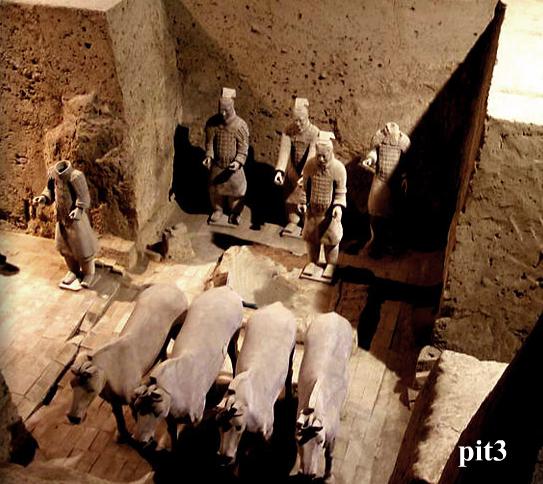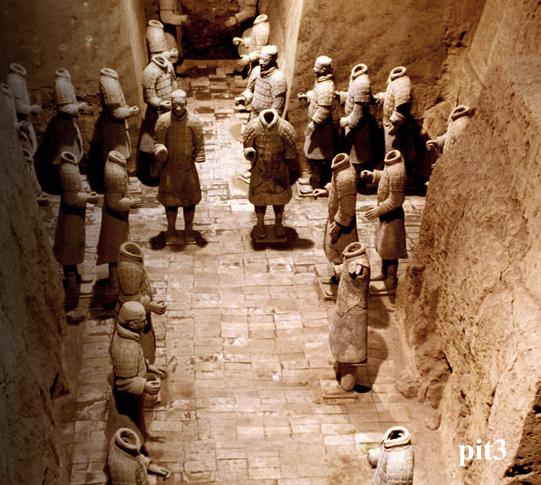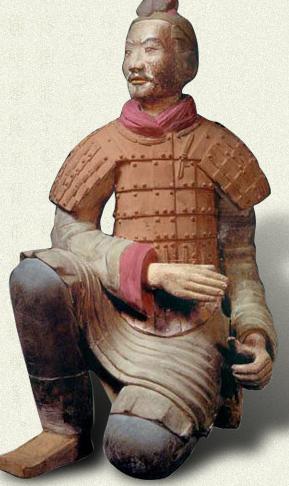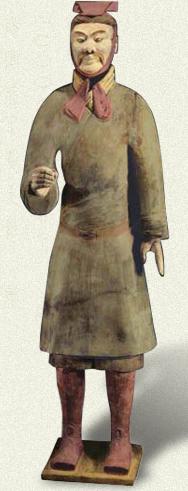Pit 3
 |
 |
Pit 3 is concave, with an area of 520 sq meters. One chariot, four terracotta horses and 68 armored warriors were unearthed from the pit.
Judging by the layout of the pit, it is likely the headquarters, where the mighty underground army would have received its direction from.
Different from the battle formation of Pit1 and 2, the warriors in Pit 3 were arrayed opposite to each other along the walls, in two rows. The only kind of weapon discovered in Pit 3 was Shu, which had no blades and is believed to have been used by the guards of honor. Unearthed also in this pit was a war drum and other bronze articles usually used by commanders.
Like the army they were modeled after, the terracotta warriors ooze overwhelming liveliness with young and battle-hardened faces and clean-shaven moustaches or beards.
They also paid attention to dress. Now grey, the terracotta warriors used to have colorful uniforms. They were painted in vermilion, purplish red, dark purple, green, blue, while, pink, or reddish brown. But the original paint peeled of over time.



Some maintain the Qin people adored black and would never have been dressed in rich colors; and the terracotta warriors were colorful simple because they were funerary objects.
Clothing tells the ranks of wearers. The less decorative their dress is, the lower the rank will be. High-ranking generals wear double-layered robes, with collars, chests, shoulders and edges of the armor decorated with various patterns. They even wear flowers to show authority or military achievements.

This high-ranking general has eight flowers on his armor: three on the chest, three on the back and two on the shoulders.
He has a bulging stomach, a feature common to all the warriors, generals or soldiers. Was it a beauty standard of the time, or simply an invention of the craftsmen who made it?
Experts say the Qin state boasted mature brewing techniques and men loved drinking.